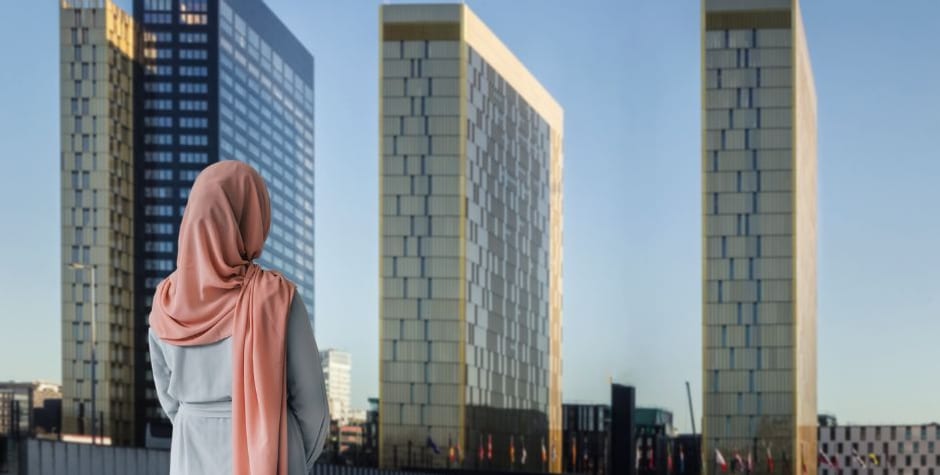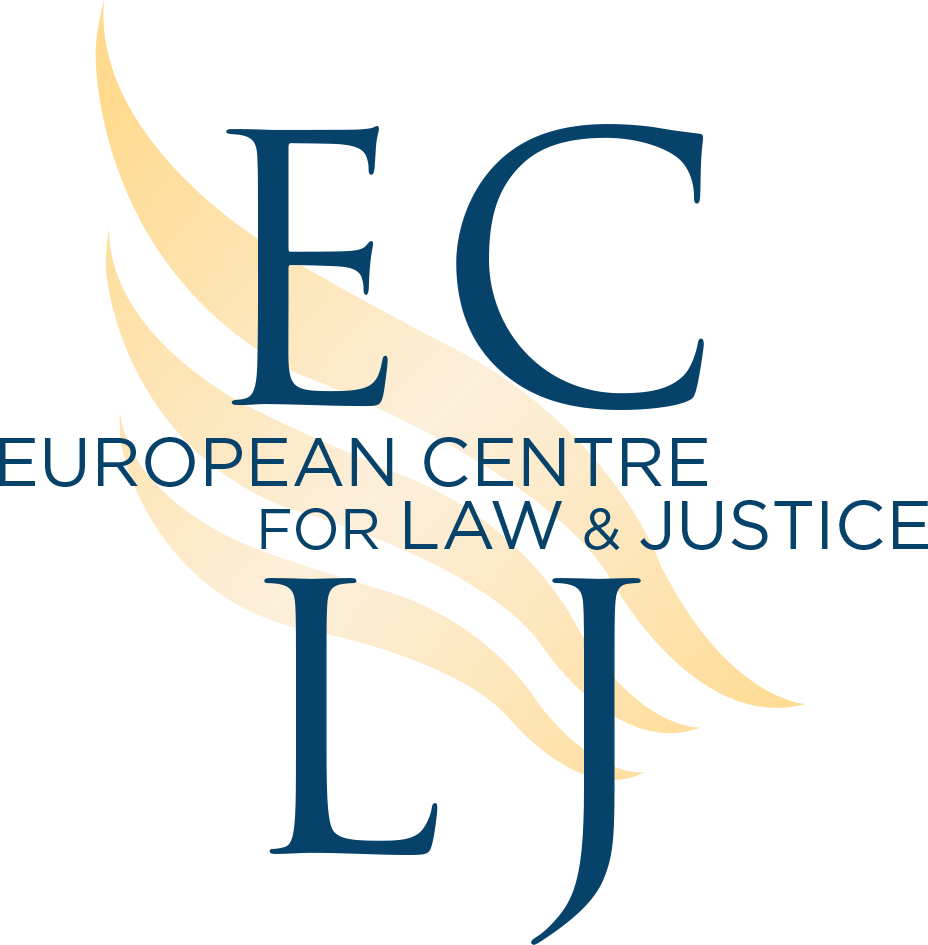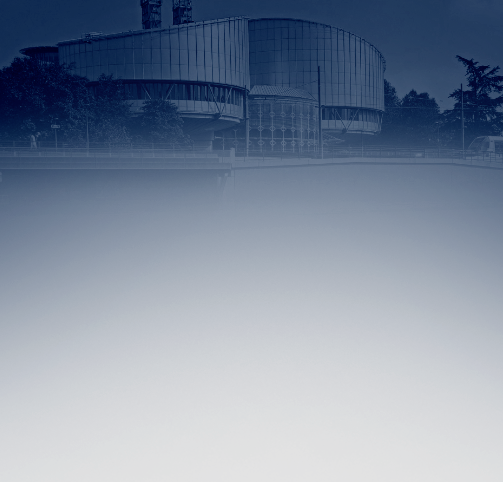

Worrying Signs: Reflections on the CJEU’s Secular Bias in Religious Liberty Jurisprudence
Religious Liberty: CJEU’s Secular Bias
The Court of Justice of the European Union (“CJEU”) is becoming a vehicle for secularism. Although the CJEU began as a court that primarily ruled on economic rights among European Union member states, since 2017, it has started wading into religious liberty issues.[1] So far, the Court has dealt with issues such as workplace bans on religious attire,[2] ritual slaughter,[3] religious discrimination in recruitment and dismissal policies,[4] and tax exemptions for religious buildings,[5] to name a few. Throughout these cases, there has developed a consistent theme of promoting a specific vision of “neutrality” in the workplace and undermining privileges once held by religious groups. Given that the CJEU’s judgments immediately become binding law in all EU member states, the development of its jurisprudence is of the utmost importance to those who wish to safeguard religious freedoms in Europe.[6] This article explores two aspects of the CJEU’s jurisprudence that present reason to worry about the future of religious liberty on the continent: the ‘neutrality’ principle and the erosion of religious privilege. These aspects will be explored through a series of cases, which together paint a potentially worrisome picture for the future of religious liberty if the Court continues on its path.
Neutrality or Partiality? A series of headscarf cases
From 2010 to mid-2016, an estimated 3.6 million Muslims migrated to Europe, many entering the workforce.[7] With the increased presence of Islamic headscarves—an objectively apparent religious symbol—in the workplace, companies began to reevaluate their neutrality policies. Consequently, in 2017, the CJEU broke its silence on religious liberty when Achbita v. G4S Secure Sols. and Bougnaoui v. Micropole SA entered its Grand Chamber.[8] These cases concerned Muslim women wearing headscarves in the workplace.[9] Following Achbita and Micropole, the Court ruled on three other headscarf cases.[10] Together, these cases illustrate the Court’s latent yet unwavering bias toward secularism through its use of the “Neutrality Principle.”[11]
The Court developed the Neutrality Principle to preserve the right of companies to freely conduct business, as guaranteed by Article 16 of the EU Charter of Fundamental Rights.[12] In the context of workplace discrimination, this principle allows companies to “ban the expression of all convictions or beliefs in the workplace.”[13] The Court reasoned that allowing companies to ban the expression of all convictions or beliefs is acceptable because the ban does not directly discriminate against any specific religion or belief and enables companies to appear neutral towards their customers.[14] While it may appear the Court is trying to respect all religions, the neutrality principle stems from partiality towards secularism.
The Court’s partiality towards secularism is unsurprising, as the pressure for secularization in Europe is “intense.”[15] In essence, secularism calls for the separation of church and state; it encourages individuals to relegate religion from the center of their lives into a private sphere.[16] As a result of this relegation, individuals are discouraged from outwardly manifesting their beliefs because to do so would break the principle of neutrality. Thus, although secularism claims to be neutral toward all religions and beliefs, it effectively discriminates against those who feel convicted to express their religion in all areas of their life.[17] The Court’s use of the Neutrality Principle in Achbita and Micropole exemplifies this discrimination, and the Court has since used the principle to advance secularism and diminish religious freedom in the workplace.[18]
In the case of Achbita, a Muslim woman notified her employer that she intended to start wearing her headscarf to work.[19] Only after she gave this notice did the company create a provision prohibiting its employees from outwardly expressing their religion.[20] When the woman chose to honor her religion and wear a headscarf, the company fired her for violating its’ provision.[21] The Court stated that because the provision was mandated in a “general and undifferentiated” manner, it was “neutral” and thus did not discriminate against the woman’s religion.[22] While allowing companies to implement provisions like the one in Achbita appears neutral on its face, in reality, the Court is favoring the company’s right to conduct business over the woman’s right to outwardly express her religion.[23] By taking this stance, the Court approved “of a policy that favors the selection of religiously neutral workers (i.e., those who are willing to hide their faith when working with customers).[24] Of course, this policy also favors those with no religion at all. The decision, in this case, and Micropole, set a precedent for companies to show partiality towards secularism under the guise of neutrality.
In Micropole, a Muslim woman wore her headscarf to work without issue for over a year.[25] The company in Micropole fired a Muslim woman after a customer complained about her headscarf.[26] The Court held that the company was discriminatory because it only fired the woman out of fear of losing business and not because it wanted to maintain neutrality in the workplace.[27] On the surface, the judgment in Micropole may seem to reject the Court’s principles in Achbita, but unfortunately, that is not the case. Unlike the company in Achbita, the company did not have a neutrality policy in place and only referred to a ‘neutrality principle’ in its communications with the Muslim woman.[28] Thus, as some scholars have noted, the Court’s Micropole decision “may cause an increase in company provisions concerning dress code, so as to prevent any legal uncertainty.”[29]
Since Achbita and Micropole, three other cases involving headscarves in the workplace have entered the Court’s Chamber, and the judgments did not provide any further hope for religious liberty in the workplace.[30] The Court used these cases to uphold its Neutrality Principle from Achibita, allowing companies to discriminate against religion through the use of neutrality provisions.[31] While these cases may only appear to threaten cultures that wear headscarves, the ramifications of the Court’s judgment span further than head coverings. The Neutrality Principle applies to all outward manifestations of religious belief, as exemplified by the Court’s decision in IX v. Wabe, a 2021 case.[32] The company in Wabe had a rule prohibiting its employees from wearing any “political, philosophical, or religious beliefs.”[33] This means that companies may now openly discriminate against religious employees for wearing something as simple as a “Christian necklace” around their necks.[34] Thus, through its use of the Neutrality Principle, the Court has advanced secularism and stifled religious liberties in the workplace. Future judgments will show just how far the Court will permit this open discrimination.
The Erosion of Religious Privilege: labor policy, tax exemptions, and ritual slaughter
The Neutrality Principle is likely the most articulated doctrine guiding the CJEU’s jurisprudence on religious liberty. However, it is only one part of the Court’s larger project to redefine the relationship between religious and non-religious interests by eroding religious privilege. Religious privilege here refers to previously-held standards of deference, autonomy, and exemption that religious institutions exercised within a state. This privilege might manifest in exceptions to certain laws (i.e., anti-discrimination, tax laws) or burdens of proof lying with parties suing religious institutions rather than the institutions themselves. The Court has consistently taken away these privileges, making domestic courts place religious interests on the same level as state interests when determining rulings.[35] Religious interests consistently lose during those balancing tests, especially when those interests are from a minority faith.[36]
One example of the Court replacing deference with balancing tests is in the field of employment and labor policy. Previously, it was assumed that religious institutions were uniquely allowed to select applicants based on religious belief without fear of appearing discriminatory.[37] In 2018, the Court in Egenberger v. Evangelisches Werk für Diakonie und Entwicklung replaced this assumption with a test for domestic courts to use for scrutinizing the hiring practices of religious institutions.[38] Rather than giving deference to religious institutions to include religious requirements in their hiring process, courts may now require religious institutions to prove to it that said hiring requirements are “genuine, legitimate, and justified.”[39] In IR v. JQ, the Court extended this test beyond hiring criteria to dismissal policy.[40] In just two opinions, the Court reversed the burden on religious institutions, who now must justify their recruitment and dismissal procedures to courts rather than a claimant having to prove a case of discrimination against them.
Another example of the Court’s erosion of religious privilege is in the realm of tax law. In Congregación de Escuelas Pías Provincia Betania v. Ayuntamiento de Getafe, the Court ruled that a building’s function rather than its owner’s religious status determines whether a building is tax-exempt according to EU law.[41] In this case, a Catholic organization renovated a hall and asked for a tax reimbursement, citing a previous treaty with the Holy See that gave tax exemption to Catholic organizations.[42] In making its judgment, the Court elevated EU law over the treaty, with the Advocate General implying that Spain (along with all other nations in treaties with the Holy See) would have to reconcile its treaties with EU law in the future.[43] This case demonstrates that even when the source of a religious privilege is a treaty, the CJEU has no issue subjecting religious institutions to EU laws over domestic ones.
Remarkably, the erosion of religious privilege by the CJEU may be best exemplified through a series of cases on the niche topic of ritual animal slaughter. Muslim and Jewish communities both incorporate certain practices where animals must be awake during slaughter. For many years states would carve out exceptions to animal rights laws specifically for these communities. The first challenge to this status quo came from Belgium, via a law effectively banning temporary slaughterhouses that were essential to meeting the unique demand for halal (ritually sacrificed) meat created by a three-day Muslim festival.[44] Muslim communities sued, arguing that the law specifically discriminated against them. Yet, the Court held that since the law’s language did not specifically target any groups, it was neutral and, therefore, nondiscriminatory (even though it specifically affected the Muslim community).[45] Moreover, the Court held that Belgium had accommodated the Muslim interest by allowing them to still use permanent slaughterhouses (even though the expense of this alternative made it practically untenable in most cases) while also achieving EU interests in animal welfare.[46] This was the first instance where the interests of religious groups were placed on the same level as state interests and lost. A second instance occurred two years later when the Court declared that meat acquired through ritual sacrifice could not be marketed as “organic.”[47]
Finally, in the 2020 case Centraal Israëlitisch Consistorie van België v. Vlaamse Regering, the Court delivered its most devastating blow against religious freedom in the realm of ritual slaughter.[48] This case centered around a Belgian law abolishing the religious exception to the general requirement that animals be stunned before slaughter.[49] A united Jewish-Muslim coalition petitioned the CJEU, arguing that the law was openly discriminatory towards them. The Court sided with the Belgian government, holding that the law “pursued a legitimate aim” of the EU in safeguarding animal rights in a way that exemplified how the Charter was a “living document” that would adapt to changing values in Europe.[50] Although the Court recognized that the law limited these groups' ability to manifest their religion, it held that these interests were outweighed by the EU’s interests in animal welfare.[51]
These cases demonstrate that the CJEU is far more interested in protecting state interests over interests in religious freedom and expression. This is part and parcel of the adherence to “living document” thinking, which holds that new values and beliefs will emerge as Europe changes that will replace older ones. Most illustratively, the Centraal Israëlitisch Consistorie decision came down on the side of animal rights over religious freedom, despite only the latter appearing in the EU charter.[52] The former belief was more indicative of current opinions in Europe (at least in the eyes of the judge). Hence, the “legitimate aim” of these interests took precedence over those of the Jewish and Muslim communities specifically affected by this “neutral law.” This doctrine has already proven to be at odds with religious freedom on niche topics; it is only a matter of time before opportunistic petitioners use Europe’s highest court to further erode the freedom to manifest religion publicly.
Conclusion
Notably, the CJEU’s conception of neutrality is similar to that enunciated by the woman in the crucifix case, Lautsi v. Italy, a European Court of Human Rights (“ECHR”) Grand Chamber case.[53] The woman in Lautsi, an active advocate for secularism, claimed that crucifixes in schools were a violation of her, and her children’s freedom of religion, and should thus be removed in accordance with keeping schools “neutral.”[54] The ECLJ had the honor of participating in this decision as a third-party intervener, and the Court, agreeing with the ECLJ, rejected the woman’s secularist argument.[55] Unfortunately, the CJEU has not followed suit with the ECHR, and has chosen to uphold secularist arguments like that of the woman in Lautsi.
Although not all of the CJEU’s judgments mentioned above are as blatant about prohibiting the manifestation of religious beliefs as Wabe and Centraal Israëlitisch Consistorie, they reiterate the same secular theme: religion belongs in its own sphere (ideally, in your private home and weekly service), not at the center of your life. This theme is fundamentally incompatible with authentic religious belief; the very nature of a religious proposition is such that it should affect all aspects of a person’s life (religious beliefs, after all, claim to explain and guide the human experience). In this competition of beliefs, there is no true neutral ground; excluding religion from the public only clears the way for secularism to dominate. Authentic religious believers in Europe, be they Christian, Jewish, Muslim, etc., should be very troubled by the developments in the CJEU.
______________________
[1] Andrea Pin & John Witte Jr., Meet the New Boss of Religious Freedom: The New Cases of the Court of Justice of the European Union, 55 TEX. INT'l L. J. 223, 225 (2020). This article also provides an excellent and more in-depth summary of all the CJEU religious liberty cases from 2017-2018.
[2] C- 157/15, Achbita v. G4S Secure Sols, ECLI:EU:C:2017:203 (Mar. 14, 2017); C- 188/15, Bougnaoui v. Micropole SA, ECLI:EU:C:2017:204 (Mar. 14, 2017); C- 804/18, IX v. Wabe, ECLI:EU:C:2021:594 (Jul. 15, 2021); C- 344/20, L.F. v. SCRL, ECLI:EU:C:2022:774 (Oct. 13, 2022).
[3] C- 426/16, Liga van Moskeeën en Islamitische Organisaties Provincie Antwerpen VZW v. Vlaams Gewest, ECLI:EU:C:2018:335 (May 29, 2018); C- 497/17, OABA v. Ministre de l’Agriculture et de l’Alimentation, ECLI:EU:C:2019:137 (Feb. 26, 2019); C- 336/19, Centraal Israëlitisch Consistorie van België v. Vlaamse Regering, ECLI:EU:C:2020:1031 (Dec. 17, 2020).
[4] C- 414/16, Egenberger v. Evangeliches Werk für Diakonie und Entwicklung, ECLI:EU:C:2018:257 (Apr. 17, 2018); Case 68/17, IR v. JQ, ECLI:EU:C:2018:696 (Sept. 11, 2018).
[5] C- 74/16, Congregación de Escuelas Pías Provincia Betania v. Ayuntamiento de Getafe, ECLI:EU:C:2017:496 (June 27, 2017).
[6] Pin & Witte Jr., supra note 1 at 237-38.
[7] Pew Research Center for People and the Press, Europe’s Growing Muslim Population, Pew Research Center (Nov. 29, 2017) https://www.pewresearch.org/religion/2017/11/29/europes-growing-muslim-population.
[8] Andrea Pin & John Witte Jr., Faith in Strasbourg and Luxembourg? The Fresh Rise of Religious Freedom Litigation in the Pan-European Courts, 70 EMORY L.J. 587, 591 (2021); C- 157/15, Achbita; Case 188/15, Micropole. There were two cases somewhat related to religious freedom in the 1970s, C-41/74, Van Duyn v. Home Office, (1974), and C-130/75, Prais v. Council of the European Communities, (1976), but following those the Court did not address religious freedom issues until 2017.
[9] Id.
[10] C- 804/18, IX v. Wabe, ECLI:EU:C:2021:594 (Jul. 15, 2021); C- 344/20, L.F. v. SCRL, ECLI:EU:C:2022:774 (Oct. 13, 2022); OP v. Commune d’Ans, ECLI:EU:T:2023:214 (May 4, 2023), (Collins, Adv. Gen., Opinion).
[11] Laura De Pasqual, Freedom of Religion in Multicultural Europe: the Achibita and Bougnaoui Cases+, 55 GONZ. L. REV. 309, 322 (2020).
[12] 2007 O.J. (303) 17.
[13] Stephanie Hennette-Vauchez, Religious Neutrality, Laicite and Colorblindness: A Comparative Analysis, 42 CARDOZO L. REV. 539, 542 (2021).
[14] Id. at 545.
[15] Sarah Nirenberg, The Resurgence of Secularism: Hostility towards Religion in the United States and France, 5 WASH. U. JUR. REV. 131-133 (2012).
[16] Id. at 132, 157.
[17] Id. at 133.
[18] C- 157/15, Achbita v. G4S Secure Sols., ECLI:EU:C:2017:203 (Mar. 14, 2017); C- 188/15, Bougnaoui v. Micropole SA, ECLI:EU:C:2017:204 (Mar. 14, 2017).
[19] Id.
[20] C- 157/15, Achbita.
[21] Id.
[22] Id.
[23] Shannon Riggins, Limitations on the Right to Manifest Religion in European Private Companies: Achbita v. G4S Secure NV under Article 9 of the ECHR and Article 18 of the ICCPR, 33 AM. U. INT'L L. REV. 977, 1002 (2018).
[24] Laura De Pasqual, supra note 10, at 322.
[25] C- 188/15, Bougnaoui v. Micropole SA, ECLI:EU:C:2017:204 (Mar. 14, 2017).
[26] Id.
[27] Id.
[28] Id.
[29] Laura De Pasqual, supra note 10 at 322.
[30] C- 804/18, IX v. Wabe, ECLI:EU:C:2021:594 (Jul. 15, 2021); C- 344/20, L.F. v. SCRL, ECLI:EU:C:2022:774 (Oct. 13, 2022); OP v. Commune d’Ans, ECLI:EU:T:2023:214 (May 4, 2023), (Collins, Adv. Gen., Opinion).
[31] C- 157/15, Achbita v. G4S Secure Sols., ECLI:EU:C:2017:203 (Mar. 14, 2017).
[32] C- 804/18, IX v. Wabe, ECLI:EU:C:2021:594 (Jul. 15, 2021).
[33] Id.
[34] Id.
[35] Pin & Witte Jr., supra note 7, at 657 (2021).
[36] Id.
[37] Id. at 647.
[38] C- 414/16, Egenberger v. Evangeliches Werk für Diakonie und Entwicklung, ECLI:EU:C:2018:257 at ¶ 61 (Apr. 17, 2018).
[39] Id. at ¶ 64.
[40] C- 68/17, IR v. JQ, ECLI:EU:C:2018:696 at ¶ 50 (Sept. 11, 2018).
[41] C- 74/16, Congregación de Escuelas Pías Provincia Betania v. Ayuntamiento de Getafe, ECLI:EU:C:2017:496 at ¶¶ 43, 46-47 (June 27, 2017).
[42] Id. at ¶¶ 3, 8, 13-14.
[43] C-74/16, Congregación de Escuelas Pias Provincia Betania v. Ayuntamiento de Getafe, 2017 CELEX 62016CJ0074, ¶¶ 94-100 (Feb. 16, 2017) (AG Opinion).
[44] C- 426/16, Liga van Moskeeën en Islamitische Organisaties Provincie Antwerpen VZW v. Vlaams Gewest, ECLI:EU:C:2018:335 at ¶¶ 3, 16 (May 29, 2018).
[45] Id. at ¶¶ 18-19, 56-65.
[46] Id. at ¶¶ 56-65.
[47] OABA v. Ministre de l’Agriculture et de l’Alimentation, ECLI:EU:C:2019:137 at ¶ 52 (Feb. 26, 2019).
[48] C- 336/19, Centraal Israëlitisch Consistorie van België v. Vlaamse Regering, ECLI:EU:C:2020:1031 (Dec. 17, 2020).
[49] Id. at ¶ 14.
[50] Id. at 64, 77.
[51] Id.
[52] Andrea Pin & John Witte Jr., Slaughtering Religious Freedom at the Court of Justice of the European
Union, CANOPY FORUM at 5 (February 16, 2021).
[53] Lautsi v. Italy, App. No. 30814/06, ¶ ¶ 11, 12 (March 18, 2011), https://hudoc.echr.coe.int/eng?i=001-104040.
[54] Id.
[55] Id. at ¶ 52.









